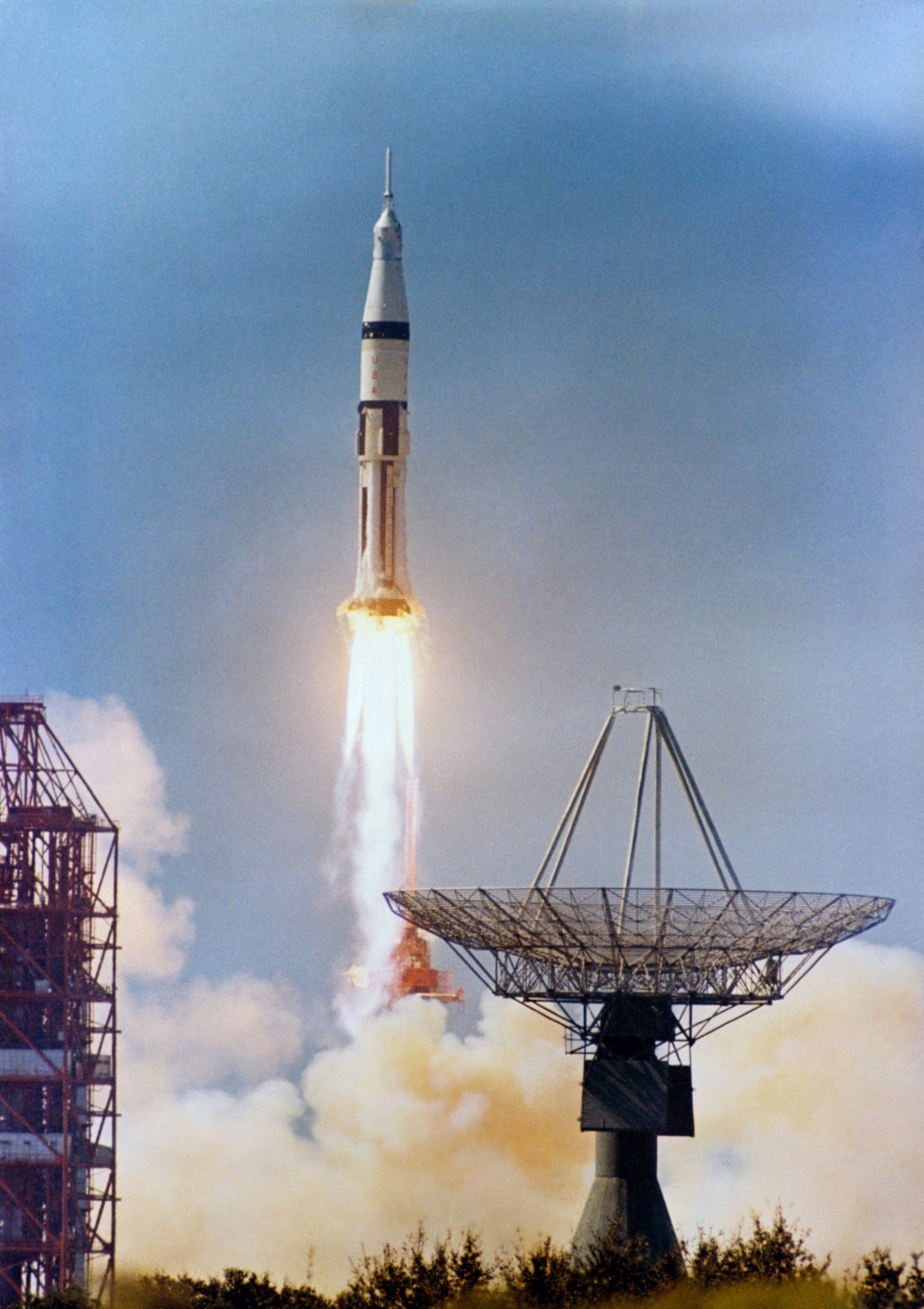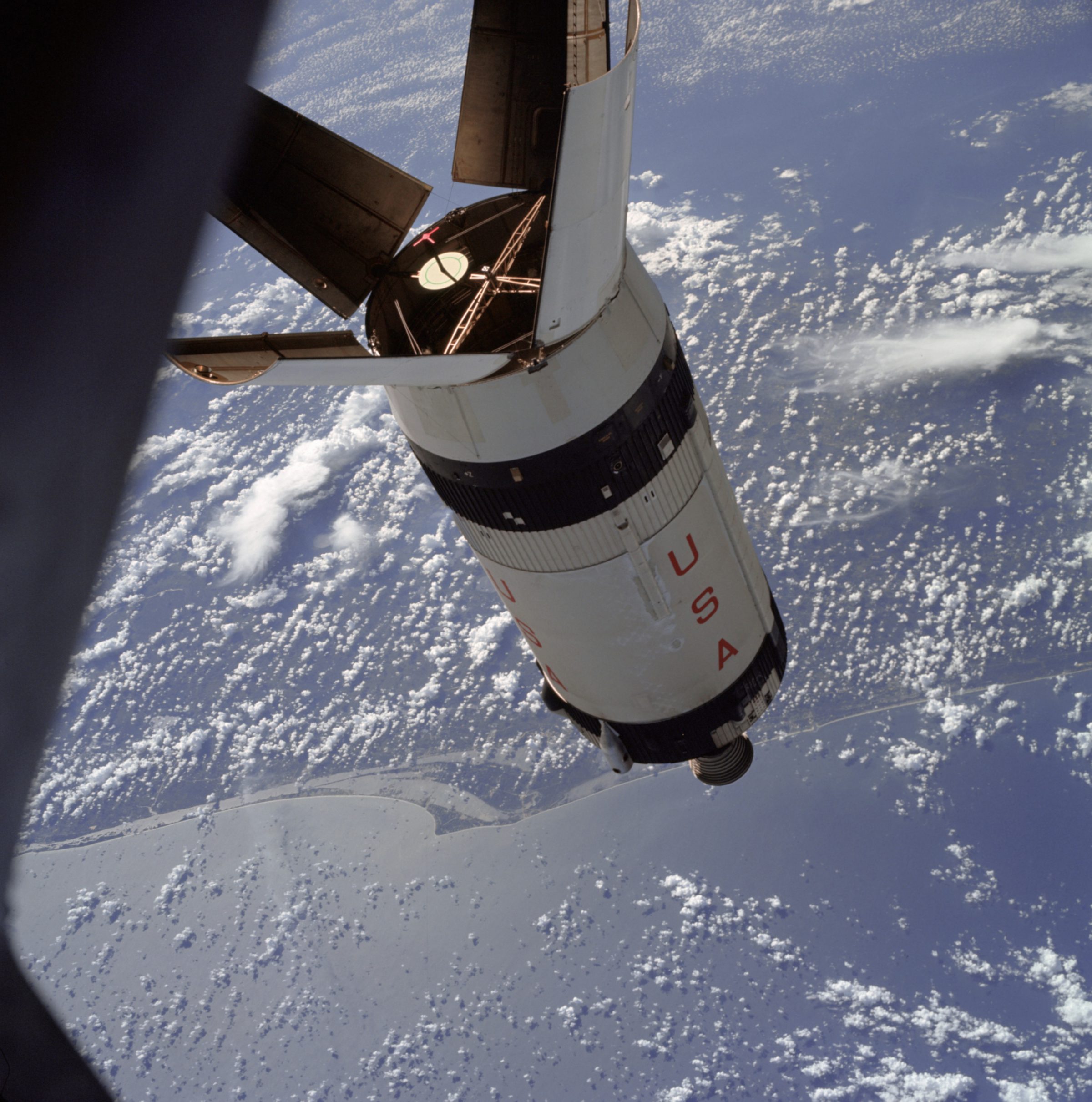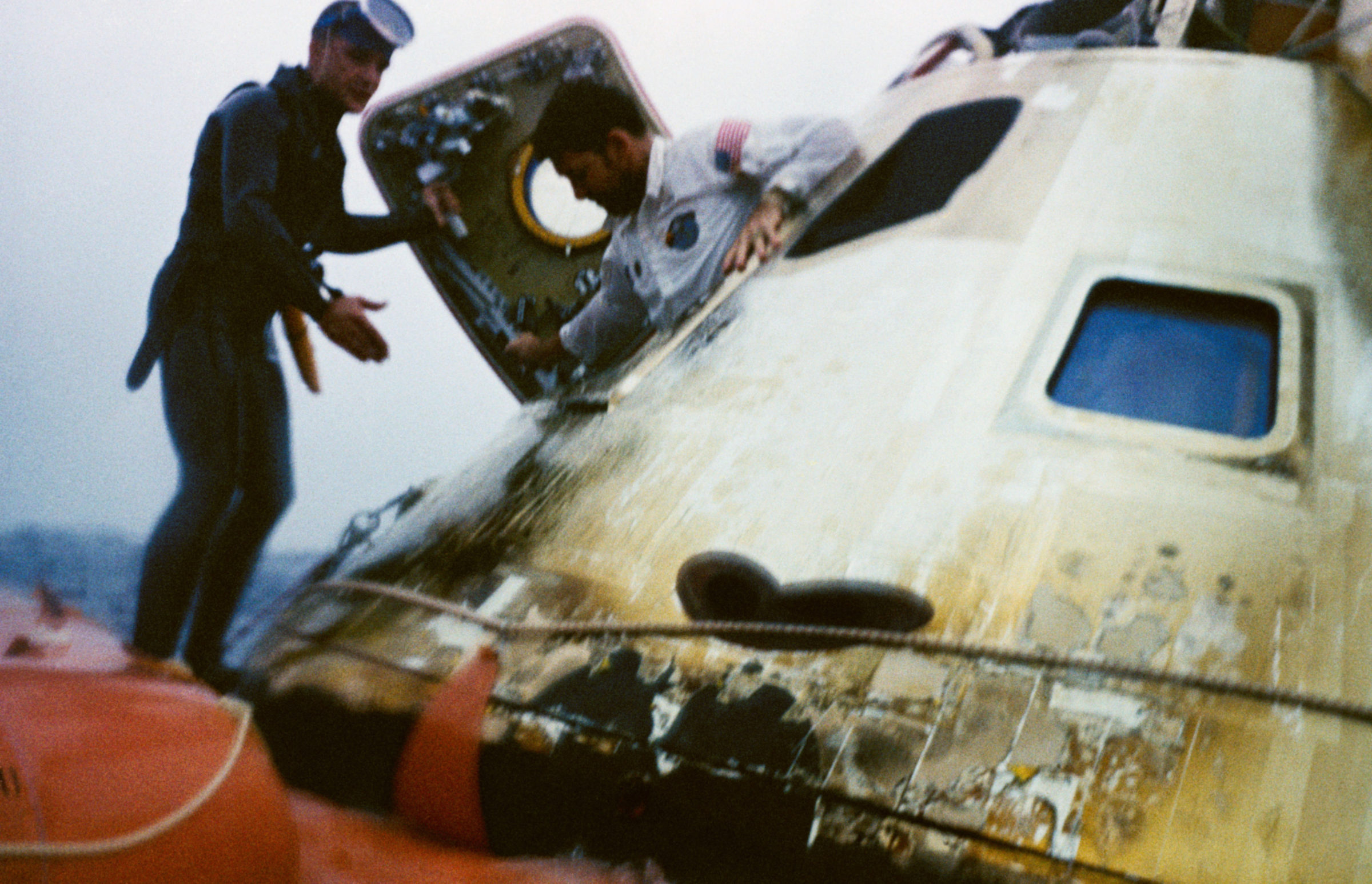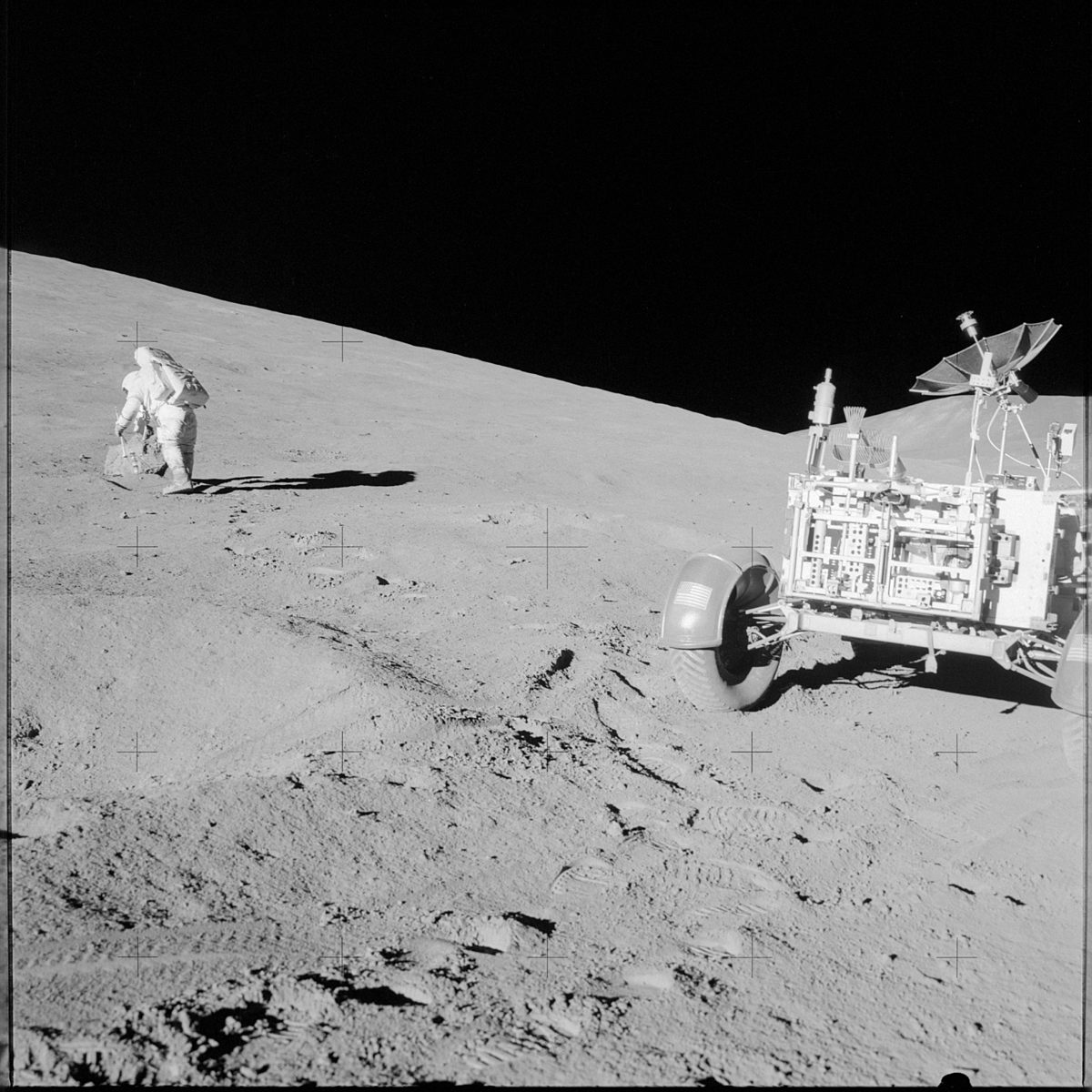Apollo 7 was the first crewed spaceflight of the Apollo program. On 11 Oct 1968, Wally Schirra, Donn Eisele and Walter Cunningham blasted into Earth orbit atop a Saturn IB rocket. There, they spent almost 11 days testing out the Apollo command and service module, which would carry future astronauts to the Moon. One test involved a rendezvous with their rocket's discarded upper stage, to simulate extracting the lunar module. The mission ended 22 Oct 1968 with a splashdown in the Atlantic Ocean.

One of the biggest successes of the mission was showing the service module engine could fire reliably after long periods of time in space. This was a crucial step before taking it to lunar orbit; if it failed to work there, the crew would be stranded.
The shakedown cruise also revealed a few problems that were corrected for future flights. One of the flower petal-like panels on the Saturn upper stage failed to open all the way, which could have prevented future crews from extracting the lunar module. Explosive bolts were added for later missions. Some of the fuel cells, which provide power to the astronauts, overheated; this could be disastrous if the crew was too far from Earth to return on batteries. Additionally, some of the command module windows fogged up due to improperly cured sealant.

The mission also featured some minor clashes between the astronauts and mission control. All three crew members developed head colds, and commander Wally Schirra allowed the crew to keep their helmets off during reentry and descent so they could blow their noses as pressure levels changed. Mission control argued otherwise, but the crew kept their helmets off anyway.

Lessons learned from Apollo 7 paved the way for Apollo 8, the first crewed flight of the Saturn V that blasted Frank Borman, Jim Lovell, and Bill Anders on a flight around the Moon in December 1968.
Apollo 7 Timeline
| Event | Time (UTC) | Date |
|---|---|---|
| Terminal countdown begins | 14:30:00 | 10 Oct 1968 |
| Crew boards spacecraft | 12:35:00 | 11 Oct 1968 |
| Liftoff | 15:02:45 | 11 Oct 1968 |
| First stage (S-IB) separation | 15:05:10 | 11 Oct 1968 |
| Upper stage (S-IVB) cutoff | 15:13:01 | 11 Oct 1968 |
| Separation of Command and Service Module (CSM) from S-IVB | 17:57:47 | 11 Oct 1968 |
| Service Module engine (SPS) ignition 1 (begin rendezvous with S-IVB) | 17:27:40 | 12 Oct 1968 |
| SPS ignition 2 | 19:03:41 | 12 Oct 1968 |
| SPS ignition 3 | 18:50:45 | 14 Oct 1968 |
| SPS ignition 4 | 15:45:45 | 16 Oct 1968 |
| SPS ignition 5 | 12:02:45 | 18 Oct 1968 |
| SPS ignition 6 | 09:10:45 | 20 Oct 1968 |
| SPS ignition 7 | 14:08:57 | 21 Oct 1968 |
| SPS ignition 8 (de-orbit burn) | 10:42:01 | 22 Oct 1968 |
| CM/SM separation | 10:46:18 | 22 Oct 1968 |
| Entry interface | 10:56:11 | 22 Oct 1968 |
| Drogue parachute deployed | 11:06:08 | 22 Oct 1968 |
| Main parachute deployed | 11:06:58 | 22 Oct 1968 |
| Splashdown | 11:11:48 | 22 Oct 1968 |
| Crew aboard recovery helicopter | 12:00:00 | 22 Oct 1968 |
| Crew aboard USS Sussex | 12:08:00 | 22 Oct 1968 |
"Look at the sunrise, gang. There you go. That's the thrill of this business."
- Walter Schirra, during Apollo 7
Apollo 7 Cost
NASA estimated the following direct costs for Apollo 7. Full costs of the Apollo program can be found on the "How Much Did the Apollo Program Cost?" page.
| original $ | inflation adjusted $ | |
|---|---|---|
| Command & Service Module | $55 million | $463 million |
| Saturn IB Launch Vehicle | $45 million | $379 million |
| Operations | $45 million | $379 million |
| Total | $145 million | $1.2 billion |
Inflation adjusted to 2019 via NASA's New Start Index (NNSI). Source: "History of Manned Space Flight." February 1975. NASA Kennedy Space Center. Located in NASA HQ Historical Reference Collection, Washington, D.C. Record Number 18194. Box 1.
Resources
Project Apollo
Starting with Apollo 7 in 1968 and culminating with Apollo 17 in 1972, NASA launched 33 astronauts on 11 Apollo missions. Twelve humans walked on the Moon.



 Explore Worlds
Explore Worlds Find Life
Find Life Defend Earth
Defend Earth





